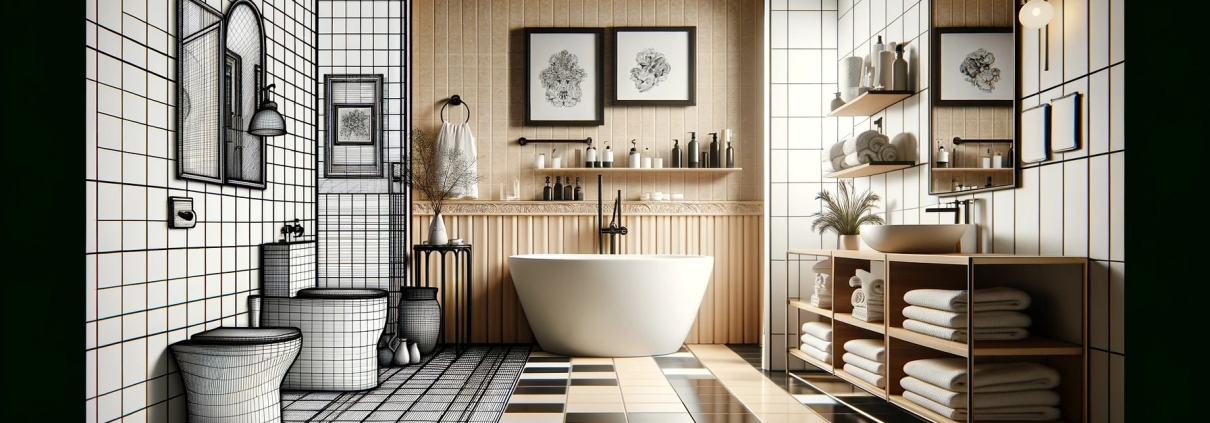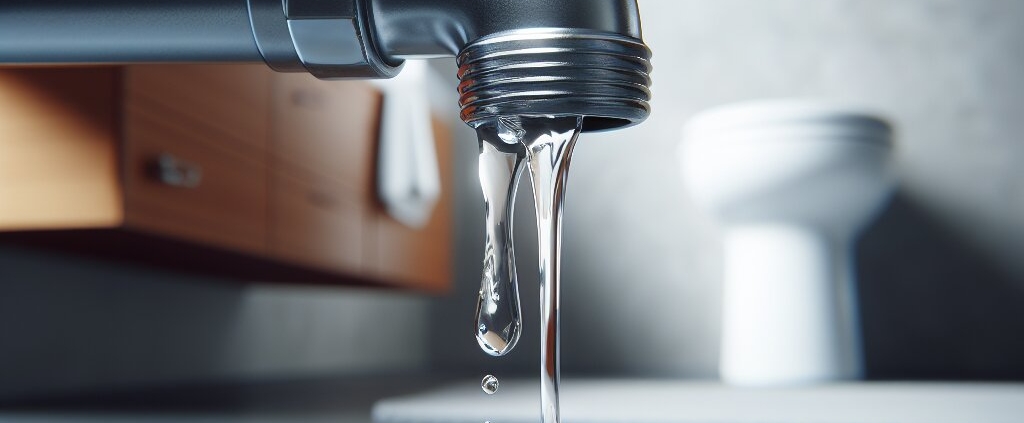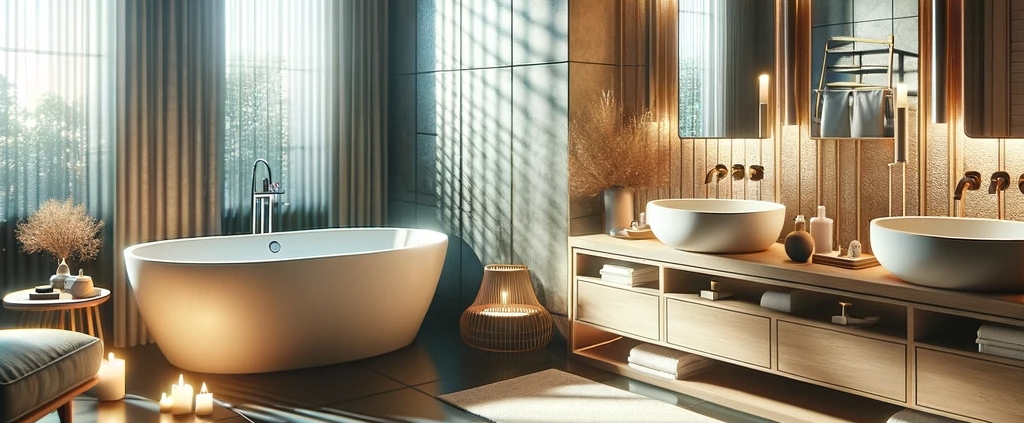Understanding Bathroom Renovation Costs
Renovating your bathroom can be an exciting project, but before you dive into selecting tiles and fixtures, it’s important to understand the costs involved. Knowing what to expect financially can help you plan and budget effectively for a successful renovation.
Average Remodeling Costs
The average cost of a bathroom remodel is approximately $10,500, but most homeowners spend between $6,000 and $15,000. Your renovation could be a modest update or a comprehensive transformation, which will influence the total expense. A standard, mid-range remodel might set you back $3,000 to $10,000, while a high-end, luxury overhaul can climb to $20,000 or more.
Here’s a quick look at the average costs for different scales of bathroom remodeling:
| Remodel Type | Cost Range |
|---|---|
| Small or Minor | $3,000 – $7,000 |
| Mid-Range | $6,000 – $15,000 |
| High-End | $15,000+ |
For more detailed examples of what these remodels can include, explore our bathroom renovation ideas.
Factors Influencing Total Cost
Several factors will impact the total cost of your bathroom renovation. These include:
- Bathroom Size: Larger bathrooms require more materials and labor, which can increase costs.
- Materials Used: The quality and type of materials—from tiles to fixtures—can significantly affect pricing.
- Renovation Extent: Are you making cosmetic changes, or is it a full renovation? The more extensive the project, the higher the costs.
- Labor Costs: Labor can account for 40% to 65% of your total expenses. The skill level required and the project’s complexity will influence these costs.
- Fixture Upgrades: Replacing items like faucets, sinks, and toilets can add to the overall cost. High-quality, designer, or custom fixtures will be more expensive.
To better understand how labor costs can affect your budget, consider the following:
| Labor Component | Percentage of Total Cost |
|---|---|
| Basic Labor | 40% – 50% |
| Skilled Labor (Plumbing/Electrical) | 50% – 65% |
If you’re looking to save on labor, DIY bathroom renovation might be an option, provided you have the necessary skills and experience.
Remember, every bathroom renovation is unique, and your costs may vary. Start by evaluating what changes are necessary for your space and what you can realistically afford. If you’re working with a smaller budget, consider a small bathroom renovation that focuses on cosmetic updates to refresh the space without a full remodel.
Breakdown of Renovation Expenses
Embarking on a bathroom remodel can be an exciting endeavor, but it’s important to understand the various costs involved. Here, you’ll find a detailed breakdown of the expenses you can expect, which include labor, materials, and fixtures.
Labor Cost Considerations
Labor typically accounts for a significant slice of your bathroom renovation cost, ranging from 40% to 65% of the total. This is due to the complexity of tasks such as intricate plumbing work, which is often more involved than other home projects. Your remodel may require the expertise of carpenters, plumbers, electricians, and tilers, each contributing to the overall labor fees.
Here’s a glance at average hourly rates for tradespeople during a bathroom remodel:
| Trade | Rate per Hour |
|---|---|
| Plumbers | $45 – $65 |
| Electricians | $65 – $85 |
| Carpenters | ~$70 |
| Tiling | $5 – $10 per sq ft (floor installation and tile prep) |
Keep in mind that these rates can vary significantly based on your location. Metropolitan areas or regions with a high cost of living typically see higher labor costs due to factors like labor shortages and increased competition.
Material Choices and Costs
The materials you choose for your remodel can greatly influence the final cost. Opting for high-end or unique materials can be a significant investment compared to more budget-friendly options.
Countertops, for example, can vary in price depending on the material:
| Material | Cost per Square Foot |
|---|---|
| Laminate | $10 – $30 |
| Granite | $40 – $60 |
| Quartz | $50 – $100+ |
Tile is another area where costs can fluctuate:
| Tile Material | Cost per Square Foot |
|---|---|
| Ceramic | $3 – $7 |
| Porcelain | $6 – $12 |
| Natural Stone | $30 – $40+ |
Remember, the complexity of the tile design can also affect both labor and material costs. For instance, a diagonal tile layout requires more cuts and thus more labor and materials.
Fixture Upgrade Expenses
Your choice in fixtures—including faucets, lighting, and countertops—will also play a part in your overall expenditure. It’s essential to select fixtures that not only match your aesthetic but are also functional and suitable for damp conditions.
Lighting is a critical aspect of the renovation, with costs varying based on the number and type of fixtures:
| Fixture Type | Cost Range |
|---|---|
| Basic Lighting Fixture | $20 – $100 |
| High-End Lighting Fixture | $100 – $300+ |
Upgrading faucets and showerheads can also impact your budget:
| Fixture Type | Cost Range |
|---|---|
| Standard Faucet | $50 – $150 |
| Designer Faucet | $150 – $300+ |
| Showerhead | $20 – $300+ |
When selecting fixtures for your bathroom, consider visiting bathroom renovation ideas for inspiration. And if you’re looking to cut costs without compromising on style, consider exploring DIY bathroom renovation options.
A well-planned bathroom renovation can transform your space, but it’s crucial to be aware of all potential costs. By understanding the breakdown of expenses, you can make informed decisions that align with your budget and renovation goals.
Smart Budgeting for Your Renovation
When it comes to modernizing your bathroom, smart financial planning can make all the difference. Strategic choices in your renovation plan can help you keep costs in check while still transforming your space. Here are some savvy budgeting strategies for your bathroom overhaul.

Keeping Layouts Intact
By maintaining the current floor plan and leaving existing utilities where they are, you can avoid one of the heftier expenses involved in a small bathroom renovation. This means not moving supply lines, drains, electricity, HVAC fixtures, and bathroom vents. Significant alterations to the layout can quickly escalate costs due to the need for new plumbing and electrical work.
| Cost-Saving Measure | Potential Savings |
|---|---|
| Keeping original layout | Reduces need for new materials and professional labor |
| Maintaining existing plumbing | Avoids expensive plumbing reconfiguration |
Choosing Timeless Designs
Opting for classic designs in your renovation can prevent the need for future updates when trends change. Trendy materials often come with a higher price tag, and their popularity can wane quickly. To ensure your renovation stands the test of time and remains cost-effective, consider investing in timeless designs and materials. For inspiration on designs that never go out of style, explore these bathroom renovation ideas.
Shopping for Secondhand Vanities
You can score significant savings by shopping for secondhand vanities. Places like Habitat for Humanity ReStores, Facebook Marketplace, and local classified ads are treasure troves for quality pieces at a fraction of the cost. This approach not only benefits your wallet but is also an eco-friendly choice, giving a new life to pre-loved furniture.
| Secondhand Source | Pros |
|---|---|
| Habitat for Humanity ReStore | Supports charity, eco-friendly |
| Facebook Marketplace | Local, convenient |
| Classified Ads | Wide variety, potential for bargaining |
Remember, the key to a successful and budget-friendly bathroom renovation is to weigh all your options, from the layout to the fixtures, and make informed decisions that balance cost and quality. While it may be tempting to cut corners, investing in crucial areas while saving on others can lead to a more satisfactory and long-lasting renovation. If you’re inclined to take on some tasks yourself, consider exploring DIY bathroom renovation opportunities, which can further reduce expenses.
Hidden Costs and How to Avoid Them
When embarking on a bathroom renovation, it’s crucial to consider potential hidden costs that could impact your budget. From structural to regulatory surprises, here’s how you can identify and avoid unforeseen expenses.
Unexpected Structural Repairs
During a renovation, you might uncover water damage or rotting wood, especially if your home is older. These structural issues can significantly increase your bathroom renovation cost. To minimize these risks, it’s advisable to have a thorough inspection before you begin. If problems are discovered, address them immediately to prevent further deterioration.
| Potential Issue | Added Cost Estimate |
|---|---|
| Water Damage | $1,000 – $4,000 |
| Rotting Wood | $500 – $2,000 |
Plumbing and Electrical Surprises
Leaky pipes or outdated plumbing can add unexpected costs to your renovation. Similarly, electrical upgrades or rewiring may be needed to meet modern safety codes or to support new fixtures and appliances. To avoid these surprises, consult with a licensed plumber or electrician for an assessment of your current systems and potential upgrades. This proactive approach can offer you a clearer picture of additional costs and save you from unplanned expenses.
| Potential Upgrade | Added Cost Estimate |
|---|---|
| Plumbing System Overhaul | $2,500 – $7,500 |
| Electrical Rewiring | $1,500 – $8,000 |
Permitting and Compliance Fees
Permit fees vary by location and can be a significant hidden cost in your renovation project. These fees are essential for ensuring your renovation complies with local building codes and regulations. Before starting your bathroom renovation, research the necessary permits and factor these costs into your budget. In some cases, the cost of permits can range from a few hundred to several thousand dollars.
| Permit Type | Cost Estimate |
|---|---|
| Building Permit | $350 – $1,800 |
| Plumbing Permit | $50 – $500 |
| Electrical Permit | $10 – $500 |
By anticipating these hidden costs and incorporating them into your initial budget, you can avoid financial surprises and ensure a smoother renovation process. If you’re considering a DIY bathroom renovation, remember that hiring professionals for inspections and permits can still save you money by preventing costly mistakes.
Maximizing Value on a Budget
Embarking on a bathroom renovation project can be financially daunting. However, with strategic planning and informed decisions, you can maximize the value of your renovation while adhering to your budget.
Prioritizing Essential Upgrades
Start by identifying the most critical aspects of your bathroom that need upgrading. Ask yourself what changes are necessary for functionality, and what are merely aesthetic. Prioritize upgrades that address functional concerns, like a leaky faucet or an outdated toilet, which not only improve your quality of life but also prevent future expenses due to ongoing issues.

Consider the following upgrades as essential:
- Fixing any plumbing issues
- Updating lighting fixtures for energy efficiency
- Replacing an old toilet with a water-saving model
Remember to browse through various bathroom renovation ideas to decide which essential upgrades align with your vision and budget.
DIY Opportunities to Save
Labor costs can consume a significant portion of your bathroom renovation budget. By taking on some of the work yourself, you can save on these expenses. Tasks like painting, installing simple fixtures, or even tiling can be done without professional help if you’re willing to learn and put in the effort.
Here are some tasks you might consider for DIY:
- Demolition
- Painting
- Installing simple fixtures
For guidance on how to tackle these tasks, check out resources for DIY bathroom renovation. Make sure you’re comfortable and equipped with the necessary tools before attempting any DIY projects.
Getting Competitive Contractor Quotes
To ensure you’re getting the best deal for any professional work needed, obtain multiple quotes from different contractors. This not only gives you a range of prices but also provides leverage when negotiating costs. Explain to contractors that you’re collecting several bids, which might prompt them to offer more competitive rates.
Keep in mind the following when seeking quotes:
- Clearly define the scope of work
- Check for licensure and insurance
- Read reviews and ask for references
Remember, while cost is a significant factor, it shouldn’t be the only one. Consider the contractor’s reputation, work quality, and reliability as well. Sometimes paying a bit more upfront can save you money in the long run by avoiding repairs due to shoddy workmanship.
By prioritizing essential upgrades, exploring DIY opportunities, and getting competitive contractor quotes, you’ll be able to maximize the value of your bathroom renovation without compromising on quality. Always keep in mind that a well-planned renovation can enhance the functionality of your space, increase the overall value of your home, and ultimately provide satisfaction for years to come. If you’re dealing with a smaller space, be sure to explore small bathroom renovation tips to make the most of your budget.
Long-Term Investments and Savings
When embarking on a bathroom renovation, considering long-term investments and potential savings is crucial. By choosing quality materials, energy-efficient fixtures, and making strategic renovation choices, you can not only enhance the durability and functionality of your bathroom but also potentially increase the value of your home.
Quality Materials for Durability
Investing in quality materials for your bathroom renovation is essential for ensuring longevity and durability. While it might be tempting to choose less expensive options available at big box stores, these may not withstand the test of time. Instead, consider mid-range cabinets found in local cabinet showrooms or high-end custom-built cabinetry that can provide a more durable and unique look.
The type of tile you select can also greatly impact both cost and durability, with options ranging from $3 to over $40 per square foot. Keep in mind that intricate patterns and layouts, such as diagonal tile placement, can elevate both labor and material expenses.
| Material Choice | Cost per Square Foot | Durability |
|---|---|---|
| Basic Tile | $3 – $10 | Moderate |
| High-End Tile | $30 – $40+ | High |
| Mid-Range Cabinetry | Varies | High |
| Custom-Built Cabinetry | Varies | Very High |
For more on choosing the right materials for your small bathroom renovation, read our detailed guide.
Energy-Efficient Fixture Choices
Energy-efficient fixtures not only contribute to the sustainability of your home but can also lead to significant savings on utility bills in the long run. Consider installing LED lights, which consume less energy and have a longer lifespan compared to traditional bulbs. Additionally, look for water-saving fixtures such as low-flow toilets and showerheads. These investments can pay off by reducing your environmental impact and saving on water consumption.
Remember that proper lighting is vital in a bathroom for functionality and ambiance. The selection, number, and type of light fixtures, including features like dimmers and 3-way switching, must be considered carefully for both cost and energy efficiency.
Enhancing Home Value with Renovation
A well-executed bathroom renovation can significantly enhance the value of your home. By focusing on both aesthetics and function, you can create a space that appeals to potential buyers and commands a higher resale value. Prioritizing essential upgrades and choosing timeless designs over trendy ones can yield a better return on investment.

To maximize the value added to your home, consider the following:
- Leave the existing utilities in place to save on costs while maintaining a functional layout.
- Select high-quality materials that appeal to buyers and ensure durability.
- Install energy-efficient fixtures for sustainability and cost savings.
- Focus on creating a visually appealing and practical space that stands out.
For inspiration on cost-effective yet impactful renovations, explore our collection of bathroom renovation ideas.
By investing wisely in your bathroom renovation, you can reap the benefits of improved functionality, reduced maintenance costs, and increased home value. With careful planning and consideration of both immediate and long-term expenses, your renovation can be both cost-effective and enriching.

